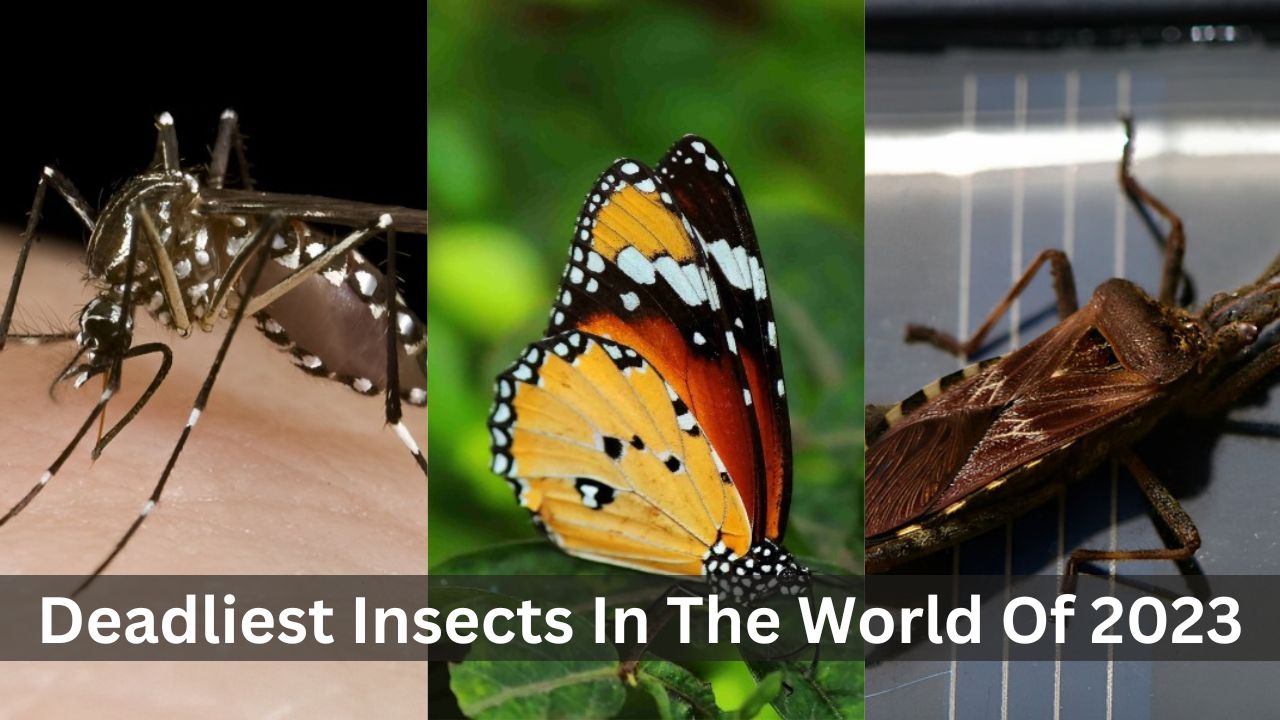In the fascinating and diverse world of insects, there are some species that possess deadly capabilities. From disease-transmitting mosquitoes to venomous spiders, these insects can cause harm and even be fatal to humans. In this article, we will explore the top 10 deadliest insects in the world of 2023. Understanding the dangers associated with these insects is essential for both our safety and our appreciation of the intricate balance of nature.
Mosquitoes
Mosquitoes are widely regarded as one of the deadliest insects due to their ability to transmit diseases such as malaria, dengue fever, Zika virus, and yellow fever. These tiny, blood-sucking insects are responsible for millions of human deaths worldwide each year, making them a significant global health concern.

Driver Ants
Driver ants, also known as safari ants, are highly aggressive and travel in large swarms. They possess strong jaws and a potent venom that they use to overwhelm their prey. Although they primarily prey on other insects, they can also attack humans when provoked, causing painful bites and potential allergic reactions.

Tsetse Fly
The tsetse fly, found in sub-Saharan Africa, is notorious for transmitting the parasite that causes African trypanosomiasis, also known as sleeping sickness. This debilitating disease affects both humans and animals and can be fatal if left untreated. The tsetse fly’s bite is painful and often accompanied by a skin lesion.

Kissing Bug
Kissing bugs, also known as assassin bugs, are responsible for transmitting Chagas disease. Found predominantly in the Americas, these bugs bite humans around the lips or face, hence their name. The bite itself is usually painless, but the parasite they carry can cause severe heart and digestive system complications if left untreated.

Fleas
While fleas are commonly associated with household pets, they can also transmit serious diseases to humans. Fleas are known carriers of the bacteria that cause plague, as well as other diseases like typhus and bartonellosis. These small, agile insects can quickly infest both animals and homes, posing a health risk to humans.

Assassin Caterpillar
The assassin caterpillar, found in various parts of the world, is deceptively dangerous. Its fuzzy appearance may seem harmless, but its venomous spines can cause severe pain, skin irritation, and allergic reactions when touched. Contact with this caterpillar’s venomous hairs should be avoided to prevent any health complications.

Blister Beetle
Blister beetles produce a toxic substance called cantharidin, which can cause blistering and skin irritation upon contact. This defensive chemical can be released when the beetle is disturbed or crushed. While not typically lethal, exposure to cantharidin can lead to painful blisters and, in some cases, systemic toxicity.

Wasps, Bees, Ants, And Hornets
Stings from wasps, bees, ants, and hornets can cause severe allergic reactions in susceptible individuals. For those with allergies, an insect sting can lead to anaphylaxis, a life-threatening condition. While these insects are essential pollinators and play important roles in ecosystems, caution should be exercised to avoid painful or potentially dangerous encounters.

Monarch Butterfly
While the monarch butterfly is not inherently dangerous to humans, it contains toxins in its body that can be harmful if ingested. Predatory animals often learn to avoid eating monarch butterflies due to the toxins acquired from the plants they feed on during the larval stage. This defense mechanism highlights the fascinating and complex interactions between insects and their environment.

Black Widow Spider
The black widow spider is notorious for its potent neurotoxic venom. Female black widow spiders, identifiable by their shiny black bodies and red hourglass marking, are the most venomous. While they generally avoid human contact, their bites can cause severe pain, muscle cramps, and other systemic symptoms. Prompt medical attention is essential if bitten by a black widow spider to prevent complications.

Conclusion
In the intricate world of insects, there are species that possess deadly capabilities. From disease-transmitting mosquitoes to venomous spiders, these insects can pose significant risks to human health. Understanding the dangers associated with these insects is crucial for taking appropriate precautions and minimizing the risk of encounters. It is also a reminder of the delicate balance of nature and the need for conservation efforts to protect both humans and the diverse ecosystems these insects inhabit. By respecting and appreciating the complexity of the natural world, we can coexist with these insects and ensure our safety while preserving the fascinating diversity of life on our planet.
